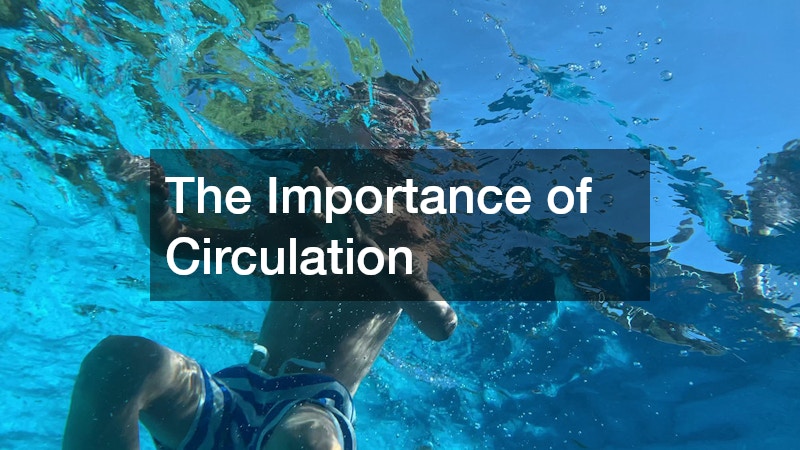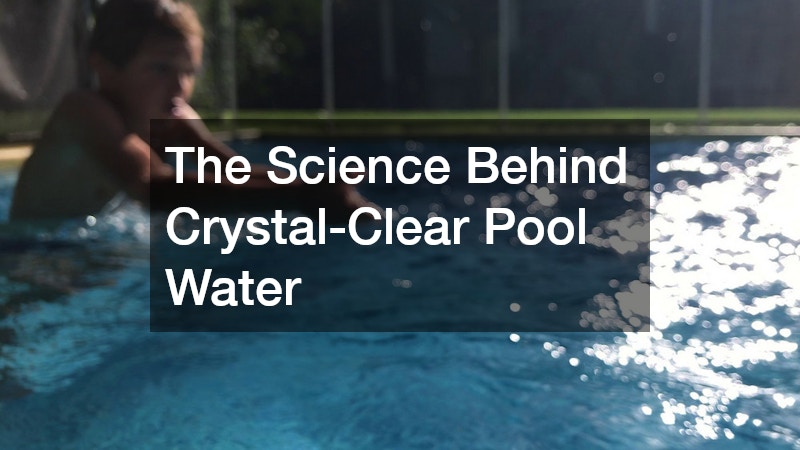There’s something irresistible about stepping into a pool where the water sparkles in the sun—clean, clear, and inviting. But that beautiful clarity doesn’t happen by chance. Behind every pristine swimming pool is a careful balance of chemistry, filtration, and technology. Understanding the science behind crystal-clear pool water can help homeowners and facility managers maintain safe, healthy swimming conditions year-round. Let’s dive into the fascinating principles that make pool water purification possible.
The Chemistry of Clean Pool Water
At the heart of every clean pool is chemistry. Pool water is a delicate ecosystem where multiple factors—pH, alkalinity, calcium hardness, and sanitizer levels—must remain in balance. If any of these variables shift too far, the result can be cloudy water, algae blooms, or irritation for swimmers.
The ideal pH range for pool water is between 7.2 and 7.6. This range ensures that chlorine, the most common sanitizer, works effectively while also preventing corrosion or scale buildup on pool surfaces. Total alkalinity acts as a buffer for pH, keeping it stable even as swimmers, rainwater, or environmental debris enter the pool. Calcium hardness prevents the water from becoming too “soft” and leaching minerals from tile or grout.
When these factors are carefully monitored and adjusted, they create the foundation for effective water purification. Proper chemical balance not only keeps the pool visually appealing but also protects the health of swimmers and the longevity of pool equipment.
The Role of Filtration Systems
Even with perfectly balanced chemistry, clean pool water requires efficient mechanical filtration. The filter is the unsung hero of pool maintenance—constantly removing microscopic debris, oils, and organic matter that cloud the water. Modern filtration systems use three main types of filters: sand, cartridge, and diatomaceous earth (DE).
Sand filters are popular for their durability and ease of maintenance. As water passes through layers of sand, tiny particles are trapped and filtered out before the clean water is returned to the pool. Cartridge filters use fine mesh material to catch even smaller contaminants, while DE filters provide the highest level of filtration by coating a grid with diatomaceous earth, a naturally occurring powder made from fossilized algae.
Regardless of the system used, filtration is essential to the science of water purification. It ensures that debris and microorganisms are physically removed from the water, creating the clarity that makes a pool look pristine. Regular backwashing, cleaning, and replacement of filter media are vital to keeping the system effective over time.
How Sanitizers Keep Water Safe
Filtration alone can’t eliminate every threat in a pool. Bacteria, viruses, and algae can still grow if sanitizing agents aren’t maintained at proper levels. Chlorine remains the gold standard for disinfection because it oxidizes contaminants and destroys harmful microorganisms. When chlorine is added to water, it forms hypochlorous acid—a compound that penetrates the cell walls of bacteria and neutralizes them.
However, there are alternative sanitizers available for those seeking reduced chlorine exposure. Bromine, often used in hot tubs, is effective in warmer water environments. Some modern pools incorporate ozone or ultraviolet (UV) systems, which neutralize pathogens without relying solely on chemicals. These technologies work in conjunction with filtration to ensure that the water stays hygienic and safe for swimmers.
The Role of Oxidation in Clarity
Oxidation plays a key role in maintaining clear pool water. Every time swimmers enter the pool, they introduce organic compounds—sunscreen, sweat, body oils, and other residues. Over time, these substances combine with chlorine to form chloramines, which cause that familiar “pool smell” and irritate eyes and skin. Oxidation processes break down chloramines and other organic materials, restoring water freshness and clarity.
Shocking the pool—adding a high dose of chlorine or a non-chlorine oxidizer—helps burn off built-up contaminants. This process supports overall water purification by resetting sanitizer effectiveness and preventing cloudy or discolored water. Regular oxidation treatments are one of the best ways to ensure a sparkling, crystal-clear pool.
Advanced Purification Technologies
As technology evolves, so do the methods used to keep pool water pure. Advanced purification systems combine science and innovation to reduce chemical dependency and improve sustainability. Ultraviolet (UV) purification systems, for instance, expose pool water to high-intensity UV light that neutralizes microorganisms without adding any chemicals. Ozone generators use oxygen molecules to produce ozone gas, which oxidizes and destroys bacteria, viruses, and organic contaminants.
Another increasingly popular option is mineral purification. These systems introduce copper and silver ions into the water, which naturally inhibit algae and bacteria growth. This approach offers a gentler, more environmentally friendly way to maintain cleanliness without relying heavily on traditional sanitizers. By integrating these technologies, pool owners can achieve a more comprehensive approach to water purification that’s efficient, safe, and sustainable.

The Importance of Circulation
No matter how effective your filtration or sanitization system is, water must circulate properly for these systems to work. Stagnant areas in a pool can become breeding grounds for bacteria and algae, leading to cloudy or discolored water. A well-designed circulation system moves water evenly throughout the pool, ensuring that sanitizers and filters can reach every corner.
Most pools rely on a pump and return jets to achieve consistent circulation. The pump draws water through the skimmer and main drain, sending it through the filter and back into the pool. Running the pump for the recommended number of hours per day (often 8–12, depending on pool size) keeps the water clean, balanced, and sparkling.
Environmental Factors That Affect Water Quality
Pool water doesn’t exist in isolation—it’s constantly influenced by environmental factors like weather, surrounding vegetation, and bather load. Heavy rainfall can dilute sanitizer levels and change pH balance, while wind can blow dust and debris into the pool. Sunscreens, cosmetics, and even leaves add organic material that challenges the pool’s purification system.
Regular maintenance routines such as skimming debris, vacuuming the pool floor, and checking chemical levels help manage these variables. By understanding how environmental factors interact with the science of water purification, pool owners can stay ahead of potential issues and maintain consistent water clarity.
The Human Element: Testing and Maintenance
Even with the best technology, human oversight remains crucial. Regular testing ensures that chemical levels stay within safe, effective ranges. Pool owners should check pH and sanitizer levels at least twice a week and adjust as needed. Keeping records of test results can help identify patterns and prevent recurring problems like cloudiness or algae blooms.
Professional inspections and periodic equipment maintenance also extend the life of your purification system. Replacing worn parts, cleaning filters, and monitoring pump performance are small steps that make a big difference in maintaining clean, clear water all season long.
Behind every sparkling pool is a perfect balance of science, technology, and routine care. From the chemistry that balances pH and sanitizer levels to the mechanical filtration that removes debris, every component plays an essential role in keeping water safe and beautiful. By understanding how water purification works and staying proactive with maintenance, pool owners can enjoy the satisfaction of crystal-clear water that’s both healthy and inviting. After all, the true beauty of a pool lies not just in how it looks—but in the invisible science that keeps it pure.
